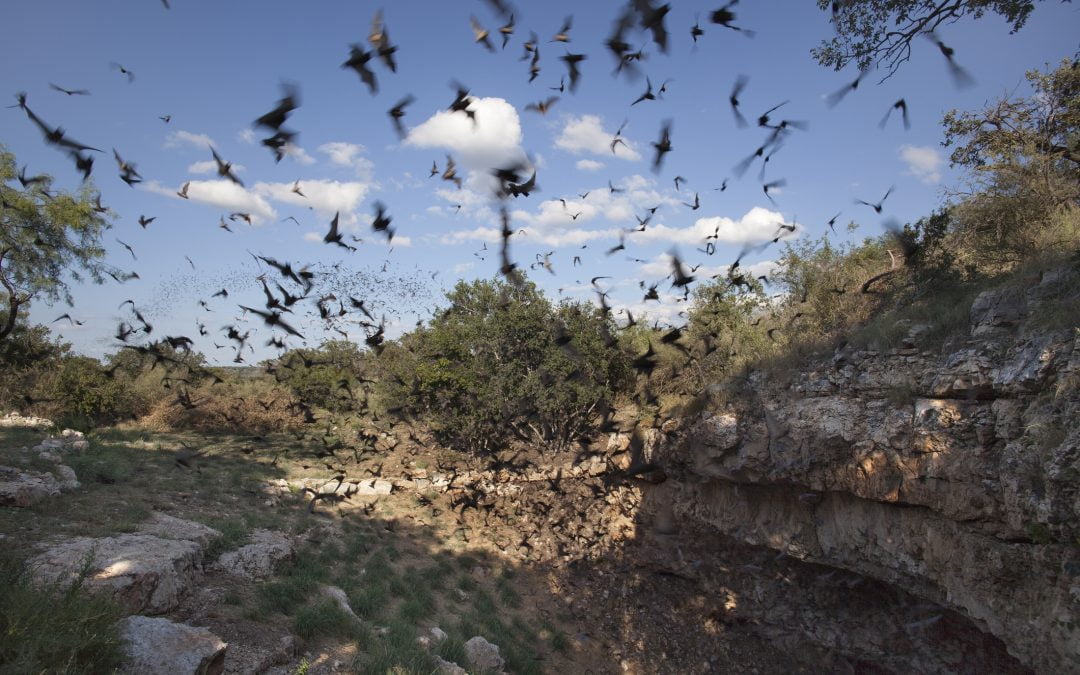If you have ever enjoyed fruit, corn products, or agave (a key ingredient in tequila), then you have a bat to thank! While often misunderstood as scary or spooky, bats play a critical role in agricultural and timber production, as they provide an estimated $3.7 billion per year in ecological services. Bats assist farmers by eating crop-damaging pests, pollinating over 300 species of fruit, and spreading seeds.
While bats have few natural predators, North American bat species are in danger of extinction due to habitat destruction and the rapidly spreading white-nose syndrome. For species that have been federally-listed as endangered (Northern Long-eared Bat and Indiana Bat), protection of these species is of utmost importance, and is required under the Endangered Species Act (ESA). Additionally, the Tricolored Bat has been proposed as endangered under the ESA due to similar threats from development and disease. Biologists with ESE Partners are tracking the official listing of the Tricolored Bat, which is likely to be federally listed in the coming months (summer 2024).
As many bat species are habitat generalists and roost in trees, culverts, and bridges, development projects of all kinds will be impacted by the listing of the Tricolored Bat. Should the Tricolored Bat be federally listed as endangered, development projects from Texas, New Mexico, and Colorado and all states east may have the potential to impact this species. Developers strive to keep impacts to these species minimal, however extensive biological surveys can impact project budgets and timelines, especially for wind-energy developments.
Luckily, after much anticipation, USFWS has released updated survey guidelines for the Indiana Bat and Northern Long-eared Bat. Prior to the release of this document, biologists were often left questions about how to efficiently survey these flying mammals, which contributed to setbacks in project budgets and timelines. These new guidelines are written specifically for the Indiana Bat and Northern Long-eared Bat but also provide critically necessary updates that can be utilized for the Tricolored Bat. The usage of the guidance remains optional at this time, however survey guidelines were designed to streamline coordination with USFWS and act as a set of standardized range-wide survey procedures. Major updates include recommendations on bridge and culvert roost surveys, mist netting and bat banding procedures, as well as an updated definition of Tricolored Bat summer habitat, ultimately making it easier for developers to minimize and avoid impacts to our agricultural heroes.
Biologists with ESE Partners are committed to keeping their eyes to the sky to watch for new guidance and regulations in order to help clients navigate the rapidly changing regulatory world. At this time, ESE Partners is equipped to assist in bat acoustic monitoring, and has assisted many clients in the renewable energy and communications sectors. We look forward to assisting you on your next bat acoustic survey!
#InternationalBatAppreciationDay









